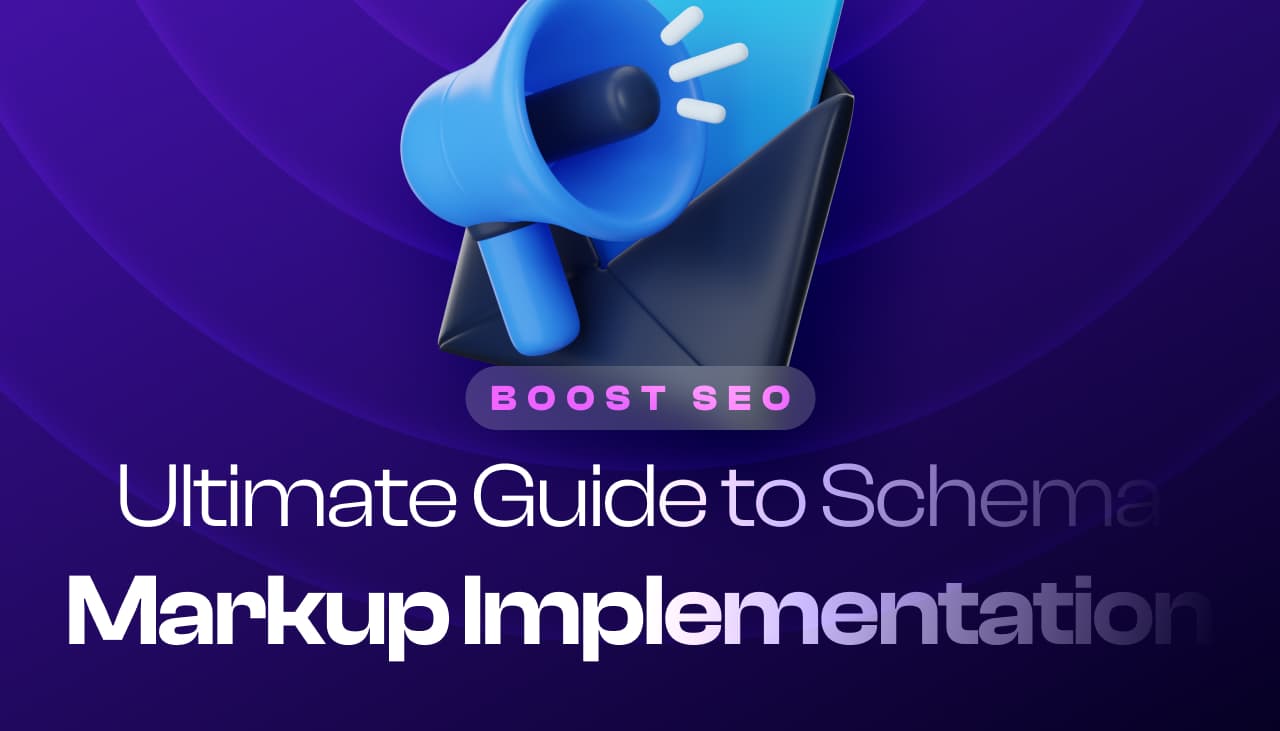Navigating Google Search Console can feel like deciphering an ancient map. It’s packed with treasure, yet without the right tips, it’s easy to miss the gold. We’ve been there, scratching our heads, but we’ve learned the ropes. Google Search Console is a powerful free tool that provides invaluable insights into your website’s performance in Google search results. By learning how to use it effectively, you can dramatically improve your SEO and drive more organic traffic to your site.
We’re here to share our top Google Search Console tips. Whether you’re a seasoned pro or just starting, these insights will help you unlock its full potential. Let’s dive in and turn those confusing charts and numbers into actionable strategies that boost your site’s performance. By the end of this guide, you’ll be able to leverage Google Search Console to improve your website’s visibility, troubleshoot issues, and make data-driven decisions to enhance your SEO strategy.
Key Takeaways
- Setting up your Google Search Console account requires a Google account, choosing the right property type, verifying website ownership via DNS, submitting your sitemap, and configuring email alerts for issues, which are crucial for optimizing your site’s SEO performance.
- To effectively use Google Search Console, understanding the dashboard’s key components—Performance, Coverage, Sitemap, Mobile Usability, and Links reports—is essential for leveraging the tool’s full potential to boost your website’s visibility and user experience.
- The Performance report offers detailed insights into clicks, impressions, CTR, and website positioning in search results, which are pivotal for strategizing SEO improvements by analyzing popular search queries, page performance, visitor demographics, device usage, and historical data comparisons.
- The Coverage Report identifies indexing issues and errors, such as 404 errors and pages blocked by robots.txt, guiding timely fixes to ensure content accessibility for better visibility, making regular monitoring a proactive step towards maintaining a healthy, well-ranked site.
- The URL Inspection Tool is invaluable for diagnosing and resolving specific URL issues, providing detailed crawl, index, and serving information, aiding in mobile usability adjustments, and facilitating re-index requests after fixing detected problems.
- Utilizing the Sitemap feature by creating, submitting, and regularly updating your site’s sitemap ensures Google can efficiently find, crawl, and index pages, while addressing issues highlighted in the Sitemap report enhances site visibility and SEO effectiveness.
How to Set Up Your Google Search Console Account
Getting started with Google Search Console might seem daunting at first, but it’s a straightforward process once you know the steps. First, you need a Google account. If you don’t have one, setting it up is quick and free. If you already have a Gmail account or use any other Google services, you can use that same account for Google Search Console.
Next, navigate to the Google Search Console website and click on ‘Start Now.’ Here, you’ll need to add your website as a new property. Google offers two property types: domain and URL prefix. We recommend opting for the domain property as it covers all URLs across all subdomains and protocols. The domain property provides a more comprehensive view of your entire website, including www and non-www versions, all subdomains, and all page paths. This means you’ll get more complete data and have an easier time managing your site in Search Console.
To verify ownership of your website, you’ll need to add a DNS record through your domain registrar. This step is essential as it confirms you’re the rightful owner of the site. Google provides clear instructions on how to do this, but if you’re not tech-savvy, you might need assistance from your web host. There are several verification methods available, including HTML file upload, HTML tag, Google Analytics tracking code, and Google Tag Manager container snippet. Choose the method that’s most convenient for you based on your technical skills and access to your website’s backend.
Once verified, it’ll take a couple of days for data to start appearing in your Google Search Console account. Use this time to familiarize yourself with the dashboard and settings. Ensure you submit your sitemap to Google. This step is crucial for helping Google find and index your pages more efficiently. A sitemap is an XML file that lists all the important pages on your website, helping search engines understand your site structure and prioritize content for crawling. To submit your sitemap, go to the ‘Sitemaps’ section in Google Search Console, enter the URL of your sitemap, and click ‘Submit’.
Configuring email alerts for issues is another vital step. It ensures you’re immediately notified about any problems Google detects with your site. This proactive approach allows you to address issues swiftly, which can positively impact your site’s performance in search results. To set up email alerts, go to the ‘Settings’ page in Google Search Console and click on ‘Messages’. From there, you can choose which types of notifications you want to receive, such as critical issues, new indexing errors, or significant changes in search performance. By staying informed about these issues, you can maintain your site’s health and prevent potential drops in search rankings.
Remember, Google Search Console is a powerful tool that offers invaluable insights into your website’s presence in Google Search. Taking the time to set it up correctly can pay dividends in understanding and enhancing your site’s SEO performance. Once you’ve completed the setup process, you’ll have access to a wealth of data about your site’s search performance, including keyword rankings, click-through rates, indexing status, and more. This information will be crucial for making informed decisions about your SEO strategy and improving your site’s visibility in search results.
Understanding the Dashboard in Google Search Console
Navigating the dashboard in Google Search Console might seem daunting at first. Yet, understanding its components is crucial for leveraging the tool effectively for SEO. At its core, the dashboard presents a summary of your site’s performance, including crucial metrics and actionable insights. It’s the gateway to more detailed reports and data analysis. The dashboard is designed to give you a quick overview of your site’s search performance and highlight any issues that need your attention. It’s divided into several sections, each focusing on a different aspect of your site’s presence in Google Search.
One of the first sections we see is the Performance report. This area showcases essential data such as clicks, impressions, click-through rate (CTR), and the average position of your website’s pages in search results. Analyzing these metrics helps us understand our site’s visibility on Google and pinpoint areas for improvement.
Next, the Coverage report is vital for identifying crawling and indexing issues. It illuminates how well Google can access your content, highlighting problems like 404 errors or pages blocked by robots.txt. Addressing these issues ensures that more of our content can be indexed and found by users. The Coverage report is divided into four main categories: Error, Valid with warnings, Valid, and Excluded. Pay special attention to the Error and Valid with warnings sections, as these indicate pages that are either not being indexed or may have issues that could affect their search performance. By regularly checking and addressing these issues, you can ensure that all your important content is accessible to search engines and potential visitors.
The Sitemap section allows us to submit our website’s sitemap to Google. This step is crucial for helping Google’s crawlers navigate and understand the structure of our site more efficiently. A sitemap is essentially a roadmap of your website that lists all important pages. By submitting your sitemap, you’re ensuring that Google is aware of all the pages on your site, including new or updated content. The Sitemap section also shows you the status of your submitted sitemaps, including how many URLs were submitted and how many were actually indexed. This information can be invaluable for identifying indexing issues and ensuring that your most important pages are being properly crawled and indexed by Google.
Another critical segment is the Mobile Usability report. With mobile-first indexing, ensuring our site is mobile-friendly is paramount. This report points out any usability issues on mobile devices, ensuring we’re providing a positive user experience across all device types. The Mobile Usability report identifies specific issues that can affect how your site performs on mobile devices, such as text that’s too small to read, clickable elements that are too close together, or content that’s wider than the screen. Each issue is listed along with the specific pages where it occurs, making it easy to identify and fix problems. Given that Google now uses mobile-first indexing, addressing these issues can have a significant impact on your overall search rankings, not just on mobile devices.
Lastly, the Links report provides insight into both internal and external links. It helps us understand how our content is interconnected and how external sites are linking to ours. This information can be pivotal for improving our site’s authority and SEO strategy. The Links report is divided into three main sections: External links (links from other sites to your site), Internal links (links within your site), and Top linking sites (the websites that link to you most often). By analyzing this data, you can identify opportunities to improve your internal linking structure, find potential link-building opportunities, and understand which of your pages are considered most valuable by other websites. This information is crucial for developing a comprehensive SEO strategy that improves your site’s authority and visibility in search results.
Understanding these key areas of the Google Search Console dashboard empowers us to optimize our website’s visibility and user experience. By regularly monitoring and analyzing these reports, we can make informed decisions that drive our site’s SEO performance forward. It’s important to note that while Google Search Console provides a wealth of valuable data, it’s most effective when used in conjunction with other SEO tools and strategies. For example, you might use the insights from Google Search Console to inform your content creation strategy, guide your technical SEO improvements, or identify opportunities for link building. Remember, SEO is an ongoing process, and Google Search Console is a powerful tool to help you continually refine and improve your approach.
Using the Performance Report to Analyze Your Website’s Performance
The Performance report is one of the most valuable features of Google Search Console, providing a wealth of data about how your site performs in Google search results. This report offers insights into your site’s impressions, clicks, click-through rates (CTR), and average position for various queries. By understanding and leveraging this data, you can make informed decisions to improve your site’s visibility and attract more organic traffic.
The Performance report is a goldmine for understanding how our website interacts with Google’s search engine. It gives us detailed insights into clicks, impressions, click-through rate (CTR), and position. By analyzing this data, we’re able to pinpoint exactly what’s working and what isn’t. This makes it easier to strategically improve our site’s SEO. Let’s break down each of these metrics:
- Clicks: The number of times a user has clicked on your site’s listing in the search results.
- Impressions: How many times your site has appeared in the search results, whether or not it was clicked.
- Click-through rate (CTR): The percentage of impressions that resulted in a click. This is calculated by dividing clicks by impressions.
- Average position: The average ranking position of your site for a particular query or page.
By analyzing these metrics together, you can gain a comprehensive understanding of your site’s performance in search results and identify areas for improvement.
One of the first things we look at in the Performance report is the query section. It shows us the search terms that direct users to our site. We use this information to adjust our content, making sure it aligns with what our audience is searching for. This section can reveal valuable insights:
- Identify your top-performing keywords and the ones that need improvement
- Discover new keyword opportunities you might not have considered
- Understand the search intent behind the queries that lead to your site
- Find long-tail keyword variations that you could target in your content
By analyzing this data, you can refine your content strategy to better match user intent and potentially uncover new content ideas that could attract more organic traffic.
Next, we delve into the pages section. Here, we see which pages on our site are the most popular with users. This helps us identify our strongest content and areas that may need more attention or improvement. When analyzing the pages section, consider the following:
- Which pages are getting the most impressions? These are the pages that Google considers most relevant to users’ searches.
- Which pages have the highest CTR? These pages likely have compelling titles and meta descriptions that encourage clicks.
- Which pages have a high number of impressions but low CTR? These pages might need optimization of their titles and meta descriptions to encourage more clicks.
- Are there any high-performing pages that could be updated or expanded to capture even more traffic?
By regularly reviewing this data, you can prioritize your content optimization efforts and ensure you’re making the most of your highest-potential pages.
Another critical aspect we focus on is countries. This section of the report reveals where in the world our site’s visitors are coming from. Understanding our geographic reach can guide us in tailoring content to specific markets or optimizing for international SEO. Here’s how you can leverage this data:
- Identify your top-performing countries and consider creating localized content for these markets
- Discover emerging markets where your site is gaining traction and explore opportunities for expansion
- If you’re targeting specific countries but not seeing much traffic, consider adjusting your SEO strategy for those regions
- Use this data to inform decisions about language translations or region-specific subdomains
- Analyze how different types of content perform in various countries to refine your global content strategy
By understanding your geographic performance, you can make informed decisions about international SEO and content localization, potentially opening up new markets for your business.
The devices section breaks down traffic by desktop, mobile, and tablet. With mobile traffic increasingly dominating the web, this data is vital. We use it to ensure our site is fully optimized for mobile users, providing a seamless browsing experience regardless of the device. Here’s how to make the most of this data:
- Compare performance metrics (clicks, impressions, CTR, average position) across different device types
- Identify any significant discrepancies in performance between devices and investigate potential causes
- Use this data to prioritize mobile optimization if a large portion of your traffic comes from mobile devices
- Look for opportunities to improve your site’s mobile usability, such as increasing page speed or improving responsive design
- Consider creating device-specific content or features if you notice certain types of content perform better on specific devices
Remember, Google uses mobile-first indexing, meaning it primarily uses the mobile version of your site for ranking and indexing. Therefore, ensuring your site performs well on mobile devices is crucial for your overall SEO success.
Lastly, the date range comparison tool is indispensable for us. By comparing different time periods, we can assess the impact of our SEO efforts over time. This helps us stay agile, adapting our strategies to maintain and improve our site’s visibility in search results. Here’s how to effectively use this feature:
- Compare your site’s performance before and after implementing significant changes or updates
- Identify seasonal trends in your traffic and search visibility
- Evaluate the success of specific SEO campaigns or content initiatives
- Track your site’s growth over time and set realistic goals for future improvements
- Analyze the impact of algorithm updates or other external factors on your site’s performance
When using the date range comparison tool, be sure to consider external factors that might influence your data, such as seasonal trends, major events, or changes in your marketing strategy. This context will help you interpret the data more accurately and make more informed decisions about your SEO strategy.
By regularly monitoring and analyzing the Performance report, we keep our finger on the pulse of our website’s SEO health. This proactive approach allows us to leverage data-driven insights to continually enhance our site’s performance on Google.
Using the Coverage Report to Identify and Fix Issues on Your Website
The Coverage Report in Google Search Console is a goldmine for troubleshooting website issues. It provides a detailed overview of which pages are indexed and which ones Googlebot can’t access. By diving into this report, we can swiftly pinpoint errors that may hinder our site’s performance in search results.
Errors highlighted in the Coverage Report include 404 errors, server errors, and pages blocked by robots.txt. Each error type serves as a direct signal that something needs our attention. Fixing these issues promptly ensures that all our valuable content is accessible to Google, enhancing our site’s visibility.
Another critical aspect covered in the report is the distinction between valid pages and pages with warnings. Valid pages are successfully indexed, but pages with warnings may face issues that could impact their performance. We tackle warnings by reviewing Google’s guidelines and making necessary adjustments to meet their criteria.
We can’t overstate the importance of regularly monitoring the Coverage Report. It’s our proactive approach to maintaining a healthy website that consistently ranks well. By addressing errors and warnings, we ensure our site remains navigable, not just by users but by search engines too.
The report also categorizes issues based on their severity, allowing us to prioritize fixes. Prioritization is key to efficiently managing our website’s health. This strategic approach lets us focus on critical issues that have a direct impact on our search performance.
In sum, the Coverage Report is essential for anyone serious about SEO. It’s not just about fixing what’s broken; it’s about continuously optimizing our site for both users and search engines.
Using the URL Inspection Tool to Troubleshoot Specific URLs
Once we’ve got a handle on the general metrics and reports within Google Search Console, it’s time we dive deeper into the specifics. The URL Inspection Tool becomes our go-to feature for this purpose. It’s designed to provide detailed crawl, index, and serving information about our web pages directly from the Google index. This makes it an invaluable resource for pinpointing and resolving specific issues with individual URLs.
To start, simply paste the URL you’re curious about into the tool’s search bar. Instantly, we’re presented with a snapshot of the page’s index status. This allows us to see whether a page is indexed successfully or if there are any barriers preventing it from appearing in search results. If we find our page isn’t indexed, the tool offers direct insights into why that might be the case.
Additionally, the URL Inspection Tool breaks down the page’s mobile usability and any AMP errors if applicable. Considering Google’s mobile-first indexing approach, ensuring our pages are mobile-friendly is critical. This feature guides us in making the necessary tweaks to enhance mobile usability.
For pages that are indexed, the tool also shows the last crawl date, which is crucial for understanding how often Googlebot visits the page. This information helps us gauge the freshness of our content in Google’s eyes. Moreover, we get to see any page resources that couldn’t be loaded by Googlebot, which could impact how our page is rendered and thus, its performance in search results.
Lastly, when we’ve made updates to a page, the tool enables us to request a re-index. This is especially helpful after we’ve fixed any issues the tool identified. By doing so, we’re essentially telling Google to come back and reassess our page, potentially improving its visibility in search results.
Throughout, the URL Inspection Tool equips us with the means to conduct targeted investigations and apply precise fixes. It demystifies the process of getting our pages seen and appreciated by Google, ultimately steering more traffic to our site.
Utilizing the Sitemap Feature for Better Indexing
One of the most powerful tools within Google Search Console is the Sitemap feature. It plays a crucial role in improving our site’s indexing. By submitting a sitemap, we’re essentially giving Google a roadmap of our website. This roadmap enables Google’s bots to find, crawl, and index our pages more efficiently.
Creating and submitting a sitemap might seem daunting, but it’s straightforward. First, ensure that our sitemap is updated. It should include all important pages we want indexed. Various tools and plugins can generate sitemaps for us, especially if we’re using platforms like WordPress.
Once our sitemap is ready, we submit it through the Google Search Console’s Sitemaps section. Simply add the sitemap URL and click submit. It’s essential to monitor the sitemap status after submission. Google provides valuable feedback if there are any issues with our sitemap.
An often overlooked tip is regularly updating our sitemap. Whenever we add new content or make significant changes to our site, updating the sitemap ensures Google knows about these changes. This can expedite the indexing process for new or updated content.
Moreover, keeping an eye on the Sitemap report within Google Search Console is vital. This report shows us which pages have been successfully indexed. It also alerts us to any potential issues, such as errors or pages Google couldn’t index. By addressing these issues promptly, we boost our site’s visibility and SEO performance.
Understanding and leveraging the sitemap feature is a key strategy for any website owner looking to enhance their site’s indexing and overall SEO health.
Monitoring and Resolving Manual Actions
In our journey to fully leverage Google Search Console, we must not overlook the Manual Actions section. This feature alerts us when our site doesn’t comply with Google’s webmaster quality guidelines. Understanding how to monitor and respond to these alerts is crucial.
Upon receiving a manual action, our first step is to comprehend the specifics. Google provides detailed descriptions of the issue, including affected URLs. This clarity helps us pinpoint the exact problems needing resolution.
Next, we take corrective measures. Whether it’s removing spammy links or improving the quality of our content, addressing these issues head-on is essential. We ensure that every necessary change is made to comply with Google’s guidelines.
After implementing the necessary fixes, we submit a reconsideration request through Google Search Console. In this request, we outline the steps we’ve taken to rectify the issues. Demonstrating our commitment to adhering to Google’s standards is key.
Regular monitoring of the Manual Actions section is a proactive measure to safeguard our site’s ranking. It’s not just about fixing issues after they occur but preventing them from happening in the first place. By staying informed and acting swiftly, we maintain and enhance our site’s credibility and visibility.
Through this attentive and responsive approach, we not only resolve manual actions effectively but also foster a stronger, more compliant web presence. This ensures our site remains in good standing with Google, an essential factor for our ongoing SEO success.
Tips for Optimizing Your Website for Mobile
In today’s digital age, optimizing your website for mobile is non-negotiable. We know more than half of web traffic now comes from mobile devices. This shift underscores the need for a mobile-first approach. A key step is to ensure your website’s design is responsive. This means it automatically adjusts to fit the screen size of any device. It offers a seamless experience whether visitors are on a desktop, tablet, or smartphone.
Another critical aspect is to improve loading times. Mobile users expect fast loading pages. A delay of even a few seconds can lead to higher bounce rates. We recommend compressing images and utilizing caching to speed things up. Google’s Mobile-Friendly Test tool is invaluable here. It helps identify elements that aren’t mobile-friendly and provides specific recommendations for improvement.
Navigation on mobile should be effortless. We advise simplifying your menu and ensuring clickable elements are easily accessible. Your content must be easily readable on small screens. This involves using larger font sizes and breaking up text into smaller paragraphs.
Don’t forget to prioritize mobile page speed. Google’s PageSpeed Insights tool offers tailored suggestions to make your mobile site faster. Implementing Accelerated Mobile Pages (AMP) can also boost speed and enhance user experience.
By focusing on these areas, we can significantly improve our website’s mobile usability. This not only aligns with Google’s mobile-first indexing but also caters to the growing number of mobile users. Ensuring a positive mobile experience is key to boosting our site’s SEO performance.
Enhancing Website Speed and Performance with Search Console
Website speed isn’t just a visitor’s demand; it’s a ranking factor on Google. That’s why we leverage Google Search Console’s insights to boost our site’s performance. Within the platform, the Speed (Experimental) report plays a crucial role. It breaks down the pages into categories based on loading speed: Fast, Moderate, and Slow. This segmentation allows us to prioritize which pages need immediate attention.
But how do we act on this information? First, we identify which elements of a page are slowing it down. Common culprits include large images, unoptimized CSS, and JavaScript issues. Google Search Console provides specific recommendations for each page. These might include compressing images or leveraging browser caching.
Implementing these recommendations often leads to a noticeable improvement in loading times. Faster pages lead to better user experiences and can improve our site’s SEO rankings. Another vital component is the Mobile Usability report. Since mobile responsiveness is a key SEO factor, this report helps us ensure that our site is optimized for mobile users.
By monitoring these reports regularly, we stay ahead of performance issues that could impact our SEO. Each update we make, based on Google Search Console’s data, brings us closer to a faster, more efficient website. Through diligent analysis and action, we turn insights into tangible benefits for our site’s visibility and user experience.
Conclusion
Harnessing the power of Google Search Console is essential for any website owner looking to enhance their SEO performance. We’ve walked you through the setup process, detailed the importance of various reports, and shared actionable strategies to optimize your site. Remember, it’s not just about understanding the data but using it to make informed decisions that drive your website forward. By regularly monitoring your site’s performance, addressing issues promptly, and adapting to the insights provided, you’ll be well on your way to achieving greater visibility and success online. Let’s embrace these tools and strategies to not only meet but exceed our SEO goals.
Frequently Asked Questions
How do I set up my Google Search Console account?
To set up your Google Search Console account, sign up with your Google account, add your website as a “property,” and verify your ownership. This involves adding a meta tag to your website’s homepage, using Google Analytics, or uploading an HTML file to your server. After verifying, you can submit your sitemap to Google for better indexing.
What is the importance of verifying website ownership in Google Search Console?
Verifying your website’s ownership in Google Search Console is crucial as it confirms your authority over the site. This allows you access to private Google Search data, issue alerts, and insights specific to your website, enabling you to optimize its SEO performance effectively.
How can I submit my sitemap to Google using Google Search Console?
To submit your sitemap to Google using Google Search Console, navigate to the ‘Sitemaps’ section under ‘Index.’ Enter the URL of your sitemap in the ‘Add a new sitemap’ field and click ‘Submit.’ This helps Google more efficiently discover and index your web pages.
Why should I configure email alerts in Google Search Console?
Configuring email alerts in Google Search Console ensures you’re immediately notified of issues detected by Google, such as indexing problems, security concerns, or manual actions. Staying informed allows you to quickly address and resolve these issues, maintaining your site’s health and search performance.
What are the key areas of the Google Search Console dashboard to focus on?
Focus on the Performance report, Coverage report, Sitemap section, Mobile Usability report, and Links report. These areas provide valuable insights into your website’s visibility, indexation, mobile friendliness, external and internal links, and overall performance, helping you make informed optimization decisions.
How does the Performance report in Google Search Console help in SEO?
The Performance report offers insights into search terms leading to your site, popular pages, geographical reach, device breakdown, and more. By analyzing this data, you can identify trends, optimize your content and metadata for relevant keywords, and tailor your SEO strategy to target specific audiences and devices.
What is the Coverage Report and how do I use it?
The Coverage Report provides details on indexed pages and those Googlebot can’t access. Use this report to identify and fix issues like 404 errors, server errors, and pages blocked by robots.txt. It categorizes issues based on severity, allowing you to prioritize what to fix to enhance your site’s visibility and SEO.
How can the URL Inspection Tool improve my website’s visibility in search results?
The URL Inspection Tool offers in-depth crawl, index, and serving information for individual pages. Use it to check if a page is indexed, identify and fix mobile usability, and AMP errors, check last crawl dates, and request re-indexing after updates. This targeted approach can significantly improve your page’s search visibility.
Why is submitting a sitemap important in Google Search Console?
Submitting a sitemap helps Google find, crawl, and index your website’s pages more effectively. It acts as a roadmap for Google’s bots, ensuring they are aware of all the pages on your site, including new or updated content. Regularly submitting your sitemap aids in optimizing your site’s indexing and visibility.
How can I optimize my website for mobile using insights from Google Search Console?
Implement responsive design, enhance loading times, simplify your navigation, and prioritize mobile page speed. Google Search Console’s






















Responses (0 )